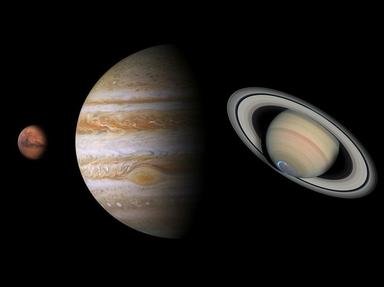Quiz Answer Key and Fun Facts
1. Starting with the furthest from the Sun, what moon of Neptune has active volcanoes?
2. Enceladus has cryovolcanoes. Which planet is Enceladus a moon of?
3. Does Venus have volcanoes?
4. Which moon of Jupiter is home to some of the most impressive volcanoes in our solar system?
5. Ahuna Mons (the largest) mountain on the dwarf planet and asteroid Ceres has some bizarre 'bright' spots which are thought to be mineral deposits caused by cryovolcanic activity from Ceres's interior. What mineral are they most likely to be?
6. At 14 miles high which is the largest known volcano in our solar system?
7. Which region on Mars hosts twelve gigantic volcanoes in a zone roughly 4000 km wide?
8. Triton's crust is frozen. What is it made of?
9. As far as we know, i.e. in the first quarter of the twenty-first century, are there active volcanoes on Mercury?
10. Where on Earth is there a supervolcano that, if it erupted, could have far reaching, disastrous effects on the ecosystem?
Source: Author
comark2000
This quiz was reviewed by FunTrivia editor
rossian before going online.
Any errors found in FunTrivia content are routinely corrected through our feedback system.
